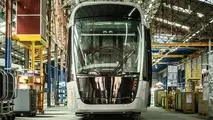Alstom’s iLint hydrogen train certified for operation in Germany
ALSTOM’s Coradia iLint hydrogen fuel cell passenger train has been granted approval by the German Federal Railway Authority (EBA) for commercial operation in Germany.

ALSTOM’s Coradia iLint hydrogen fuel cell passenger train has been granted approval by the German Federal Railway Authority (EBA) for commercial operation in Germany.
EBA president Mr Gerald Hörster presented Alstom with the certification at the Federal Ministry of Transport and Infrastructure headquarters in Berlin on July 11 during a ceremony attended by Mr Enak Ferlemann, parliamentary state secretary to the federal minister of transport and digital infrastructure and member of the German parliament.
Alstom and Lower Saxony Transport Authority (LNVG) signed a contract in November 2017 for the delivery of 14 hydrogen fuel cell trains, along with 30 years of maintenance and energy supply, to be introduced between Cuxhaven, Bremerhaven, Bremervörde and Buxtehude from December 2021. Following certification, the two Coradia iLint prototypes will enter pilot operation on the Elbe - Weser network, with passenger service scheduled for late summer.
Alstom says the Coradia iLint is powered by a hydrogen fuel cell, which produces electrical power for traction. The zero-emission train only releases steam and condensed water and is specifically designed for operation on non-electrified lines.
This project was supported by the German Ministry of Economy and Mobility with €8m from the German government as part of the National Innovation Programme for Hydrogen and Fuel Cell Technology (NIP).
“This is a strong sign of the mobility of the future,” says Ferlemann. “Hydrogen is a true low-emission and efficient alternative to diesel. Especially on secondary lines, where overhead lines are uneconomic or not yet available, these trains are a clean and environmentally-friendly option. That is why we support and promote the technology.”
Source: railjournal



